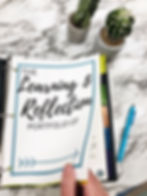5 Steps Towards Implementing Standards-Based Portfolios in Your Classroom
- Emily Aierstok
- Sep 16, 2019
- 4 min read
When I was working on my masters degree in English Education, I had an amazing professor who encouraged us to create more meaningful, research based assessments of our students' learning. I was a second year teacher at the time, and I knew that I had to change the way I assessed my students' learning.

When the standards shifted to the Common Core, my students' portfolio work shifted with it. The steps below were developed as I worked to shift to the Common Core (now Next Generation Standards in New York State) and to Standards Based Learning.
Having a standards based portfolio gives my students visual evidence of their learning and growth. It gives them a place to reflect and set goals. We use 2 inch binders with 8 dividers and store portfolios on shelves in my classroom. In the future, I hope to go digital (the portfolio forms I've created can work for print or digital portfolios).
Everyday, as soon as students enter my classroom, they grab their portfolios and bring them to their desks. Our portfolios have become an extension and representation of our learning.
Below are five steps you can easily follow to implement standards based portfolios in your own classroom:
1. Divide work by standards.
Okay, maybe this one's obvious, but organizing a standards-based portfolio by standard makes life easy. The Common Core standards are divided into major sections: Reading Literature, Reading Informational Text, Writing Informational Texts, Writing Arguments, Writing Narratives, and Writing Research. Depending on the expectations of your school, you might also choose to have a Speaking and Listening section and a Language section.
Print a list of standards by section and include the lists in students' portfolios. In other words, ask students to put a list of Reading Literature standards in the Reading Literature section, a list of Reading Informational Texts standards in the Reading Information section. These lists will come in handy when students are deciding where to file their work, reflecting on that work, and setting goals.

2. Add work.
Make adding completed work to student portfolios part of your classroom routine. In the most simple sense, students will be using metacognitive skills to determine where the work should be filed in their portfolio. To file, they have to identify the skills they are using and the standards they are mastering. For example, where will students place an annotated article? Discuss with students: what standard are you demonstrate learning and (hopefully) mastery of? Most likely, an annotated article demonstrates learning in the standard strand of Reading Informational Texts.
Every time you hand back work, go through this process. What standard were you showing mastery of? Instruct students to file their work in that section.

3. Reflect.
Simply filing work into a binder does not constitute as a true learning portfolio. Reflections is a key element of portfolio work.
Instruct your students to reflect on their learning and mastery of the standards quarterly (or by semester/trimester if that's how your school year works). Reflection should ask students to identify the standard(s) they mastered, to include the work that demonstrates that mastery, and to explain HOW the work demonstrates that mastery.
Reflection takes time (I dedicate one day per quarter to reflection); however, research shows that meta-cognitive practices are one of the most effective in solidifying learning (see The Case for Teaching for and with Metacognition here).

4. Set goals.
Once students reflect, they will likely find that they still have learning to do. Either they haven't mastered the standards you've been working on, or they still have key standards to master.
After reflecting, instruct your students to set standards based, specific, and measurable goals. Model this process by showing them what a weak goal and a strong goal look like. Then, give them time to set 1-3 goals for the next part of the school year. Check in on these goals often.

5. Culminating Activity.
At the end of the school year, instruct students to complete a final reflection on their work and the goals they accomplished during the school year. Celebrate student work with a gallery walk or with presentations.
For a gallery walk, ask half of your class to share their portfolios one day and the other half to share their portfolios the next. Add meaning by inviting in families and community members. Set up the gallery walk by asking students to stand at a desk with their portfolio on display for guests and classmates to peruse and ask reflective questions.
For a presentation, my students present their standards stories. Students spend a week writing what I call their final argument for passing 7th grade ELA. Their task is to tell the story of two standards they've mastered, using work as evidence to support their claim. Then, they tell the story of an additional standard that proved to be a challenge they were able to overcome. When telling the story of the standard that challenged them, I ask students to demonstrate their growth and eventual mastery using work as evidence.
Students standards stories work as their final exam in ELA 7. By far, they are the most meaningful final I have ever given. Students are reflective, and they work to demonstrate their best argument writing and speaking techniques. The resulting grades are a true reflection of students' understanding.

You can implement meaningful, standards based portfolios in your classroom. The good news: I have everything done for you. Click here to grab the editable standards lists, reflection forms, and goal setting sheets that I use to successfully implement standards based portfolios in my ELA classes. Enjoy!
.png)
